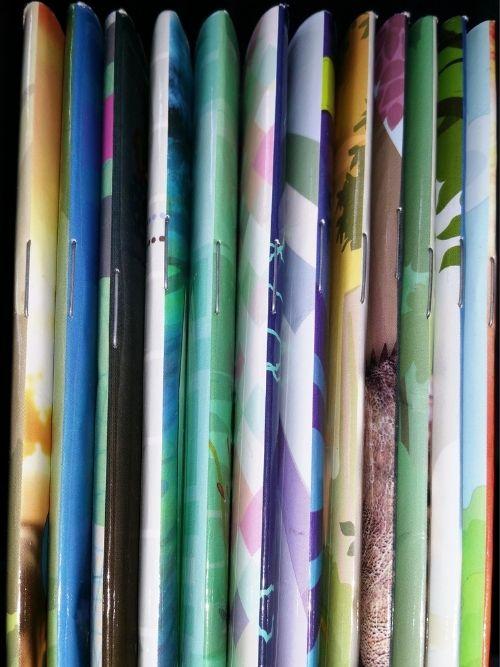Why Is It Called Saddle Stitching

You’d be excused if you’ve heard the term “saddle stitching” and always assumed it had something to do with horseback riding. But you’d be incorrect; saddle stitching is actually a type of bookbinding.
I know. It requires an explanation. So, here goes:
In the world of bookbinding, threading staples through paper is always referred to as “stitching”. And the type of binding known as “saddle stitch” involves draping papers over a device that resembles a saddle in order to thread (or stitch) staples through it. Thus, the common name.
You’re welcome.
But why should you care? Well, if you are looking for binding options, saddle stitching might be your perfect choice.
What Does Saddle Stitching Look Like?
Look around you. Can you spot a small booklet, magazine, brochure, or program? If so, there are good odds that it’s saddle-stitched.
Saddle stitching is the simplest form of professional bookbinding, using only paper and staples to create a book. Pages are folded in half, nested within one another, and then stapled together through the spine, leaving the staples visible only on the book’s open middle page. Commonly, two staples are used, but larger publications can require the use of more along the spine.
Saddle-stitched books won’t lie flat if they are more than approximately 64 pages (depending on the thickness of the paper being used), so they’re generally used for shorter publications. But that doesn’t mean they can’t be customized to suit your needs. Fancy or plain, glossy or matte, saddle-stitched publications are as versatile as your imagination. They can become anything from workbooks to portfolios to pamphlets and more!
Is Saddle Stitching Right for Me?
If you’re considering saddle stitching a publication, here are some things to keep in mind:
Quick and Cheap - Because saddle stitching requires very few materials, it’s the least expensive to bind your publication. It’s also less labour intensive than most other binding processes, which means you won’t have to wait as long to get it finished.
Number of Pages - As we mentioned, saddle stitching is ideally suited for projects that don’t exceed about 64 pages. You might squeeze in a few more, depending on the thickness of the paper, but longer publications will need to be bound using a different method.
4 Is the Magic Number - Saddle stitching only works for layouts whose page counts are multiples of four, including the covers. This is because each folded paper constitutes four pages in the final publication. Keep this in mind when designing your layout!
Wide Margins - Saddle stitching can require wider page margins to ensure that important content is neither lost in the folds near the binding nor trimmed off once the binding is complete. The exact size of the margins required will depend on the specs of your particular project.
Winnipeg Saddle Stitch
If you’re considering saddle stitch book printing in Winnipeg, the experts at PrintPro can guide you through the decision-making process. PrintPro offers design services and consultations for every type of bookbinding project and can have your publication galloping away to the print shop in no time.